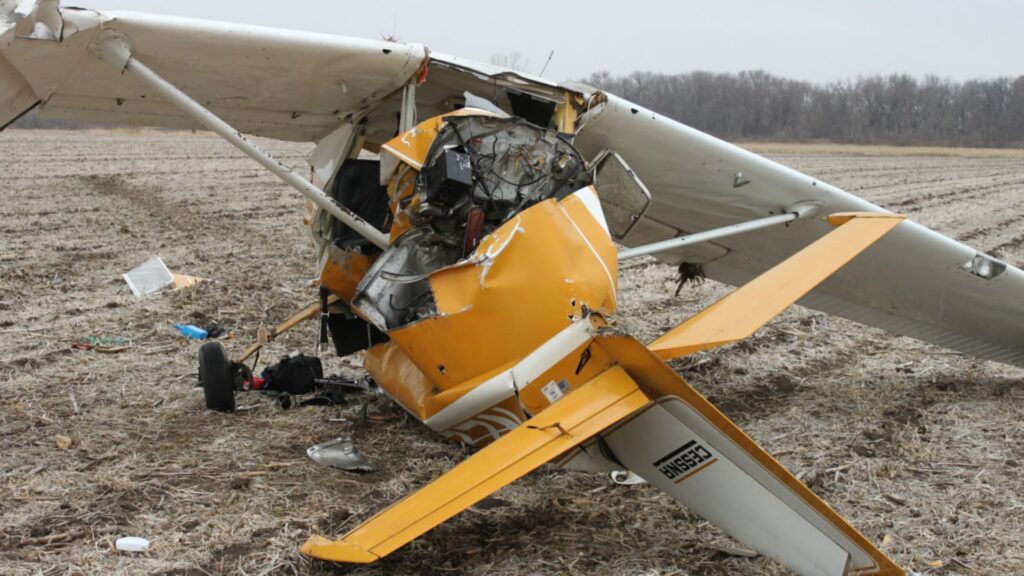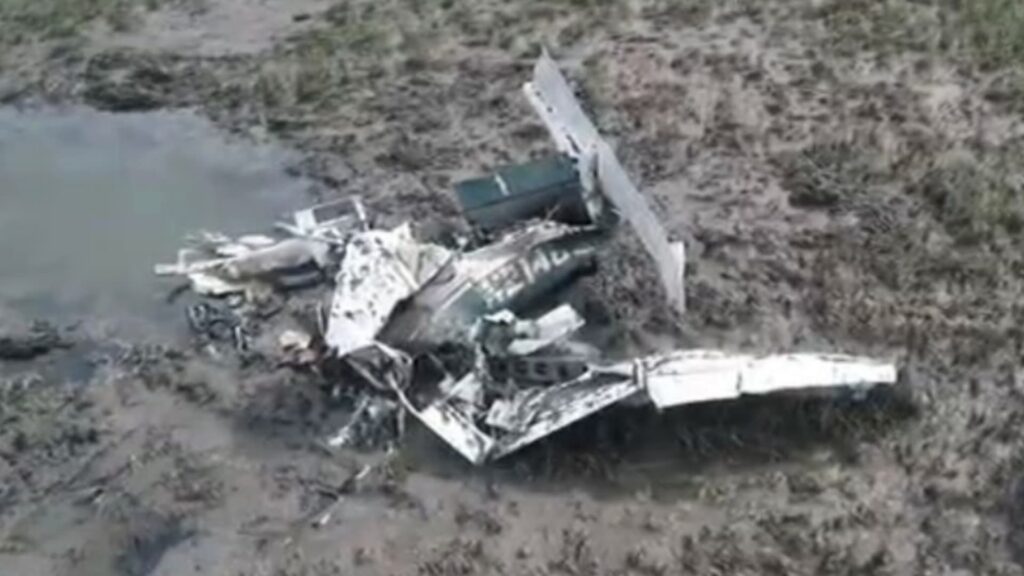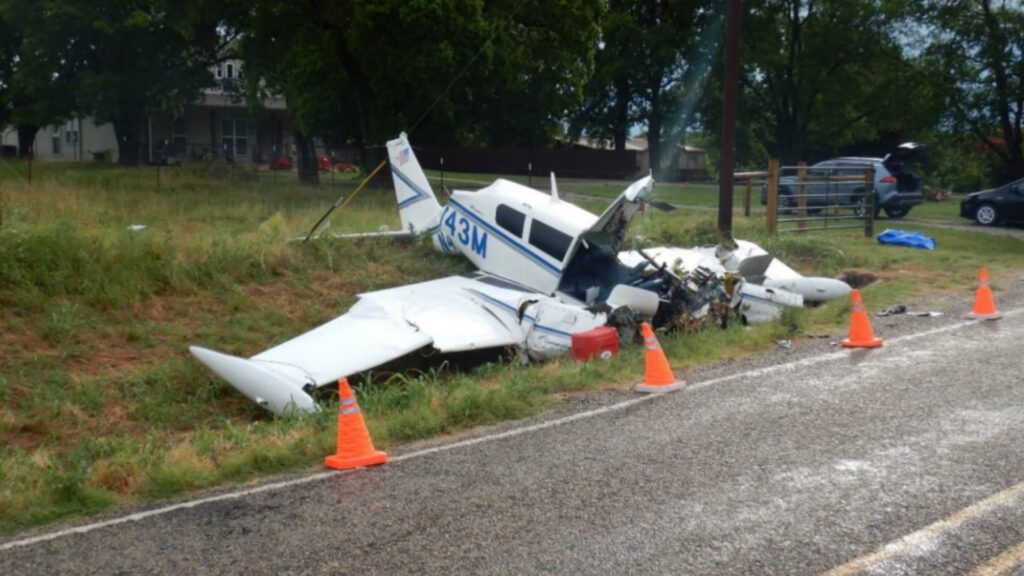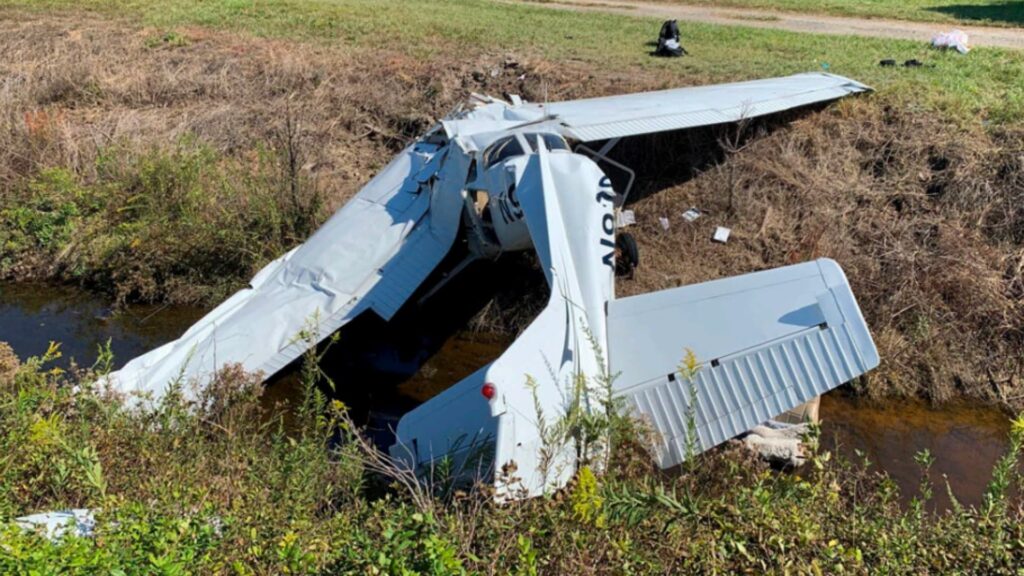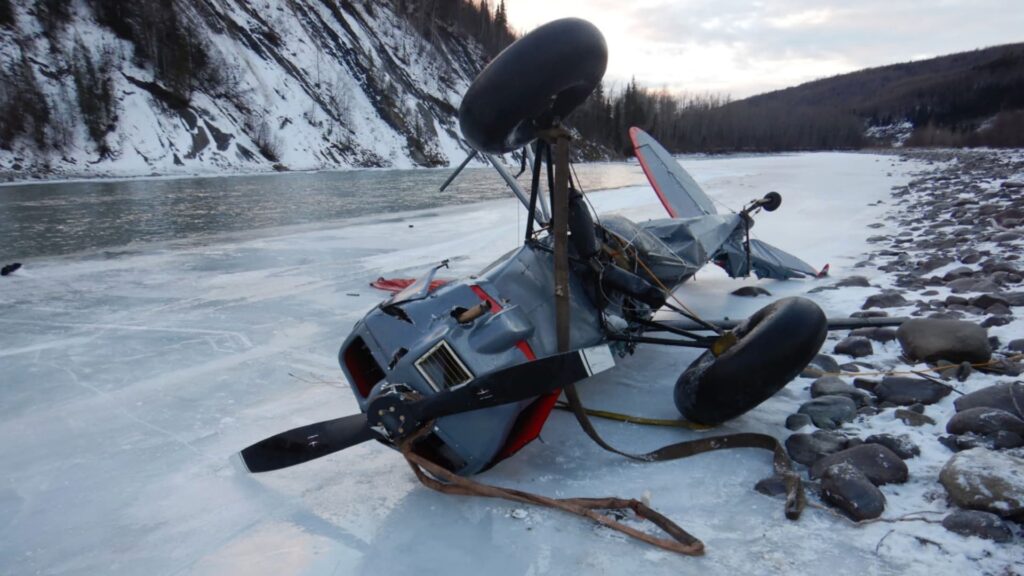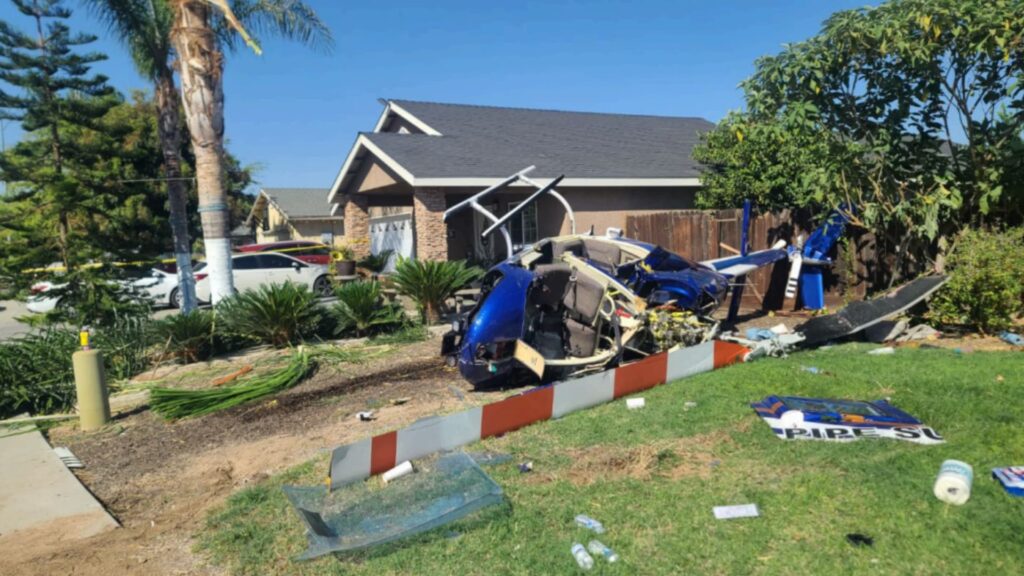The flight looked routine at the start. Mid-day on February 8, 2020, a Beechcraft F33A Bonanza, N6665U, arrived at Granbury Regional (GDJ) in central Texas. Radar and ADS-B showed the Bonanza overflew Runway 14 about 1:01 p.m. local, swung wide on a right downwind, and descended toward the field. A few minutes later, it landed, cleared the runway, and taxied toward the hangars. Seven minutes after that, the same airplane appeared back on radar—now working the pattern again—before radar returns stopped north of the airport. The wreckage was found less than half a mile beyond the last hit. The NTSB concluded this was a low-altitude stall/spin in the pattern.
Who Was Flying and In What
The pilot was a 71-year-old private pilot with single-engine land privileges. He did not hold an instrument rating or instructor certificate and flew with a third-class medical (with limitations). His logbook reflected 983 total hours, including 907 hours as PIC. In the preceding 90 days he logged 2.7 hours, with 1.2 in the prior 30 days. A month earlier—January 7, 2020—he completed a flight review that included slow flight and stalls, steep turns, use of the autopilot, and takeoffs and landings. The airplane was a 1979 Beech F33A (IO-550-B, 300 hp), on a normal category airworthiness certificate, fresh from an annual completed four months prior.
The Pattern Got Busy
If you’ve flown a sunny Saturday at a non-towered field, you know the vibe: radios humming, eyes scanning, everyone fitting in. ADS-B data showed at least three other airplanes operating at GDJ at the same time. One departed southeast as the Bonanza turned short final. Another was already in right traffic ahead. A third airplane circled above pattern altitude, then dropped in behind the Bonanza and even S-turned for spacing. That pilot recalled watching N6665U land and taxi toward the hangars—he didn’t see it again. Figure 1 in the report plots the radar/ADS-B path over a satellite image; it’s a busy picture, with a long downwind north of the field and the accident site off the end of that track.
Fuel, Weather, and Setup
Before departing Mineral Wells for the quick hop to Granbury, the pilot asked the line tech to fill “to the slots,” and she added 13 gallons. The wing placards specified “CAP TO TAB SLOT 35 GAL (32 USABLE).” Weather at 1:15 p.m. was friendly: clear skies, 10 miles visibility, winds 130° at 11 knots gusting 14, and an altimeter of 30.17. Runway 14 is 3,603 feet long and 60 feet wide—plenty for a Bonanza—but that cross-tailwind quartering from the left asked for a little discipline, especially if pattern geometry stretched or overshoot pressures crept in.
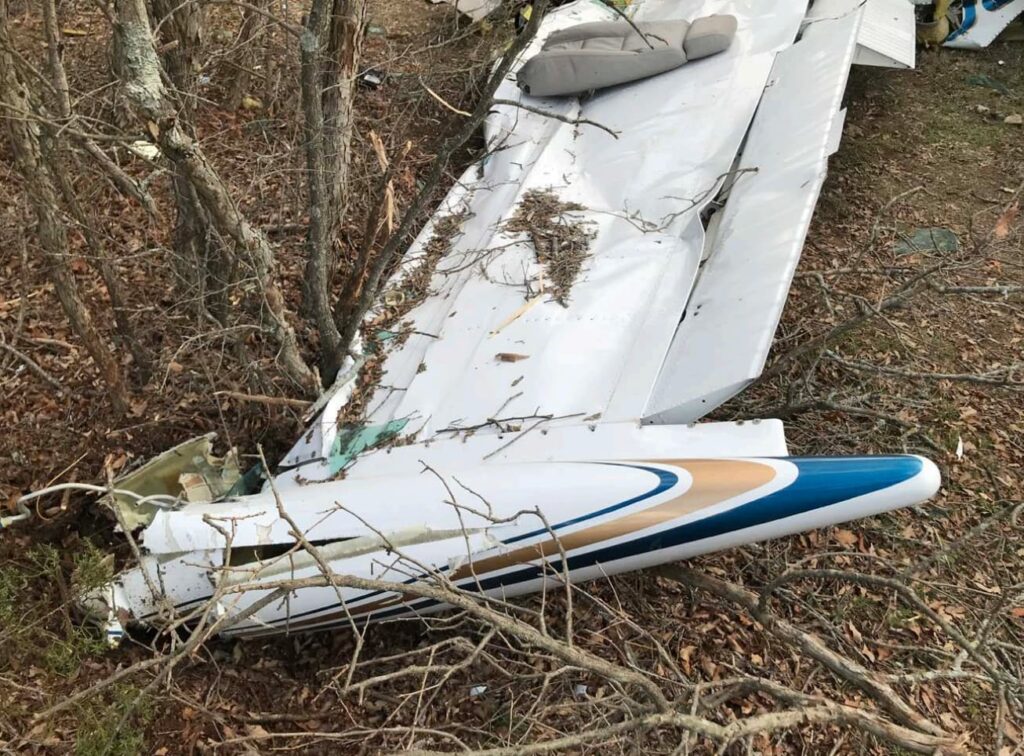
Timeline to Loss of Control
Here’s what the data sketched. At 1:01 p.m., the Bonanza overflew Runway 14 at roughly 900 feet AGL. It bent right onto a wide downwind and eased to about 400 feet AGL before a right base turn; the first data set ended there about 1:05 p.m., groundspeed 93 knots. At 1:14:18, a new radar track picked up southwest of the field, proceeding north. Two minutes and change later, the track ended at 1:16:51. The crash site sat 0.39 NM north-northeast of that final return. The NTSB assessed that the pilot was likely on an extended pattern, turning from base to final, when the wing exceeded critical angle of attack. That’s the classic base-to-final stall/spin scenario at low altitude—high bank, maybe a skidding correction to “get back” to centerline, and no altitude to trade for recovery.
The Wreckage Picture
The airplane hit trees and terrain in a steep, nose-low attitude with very little forward energy and a slightly twisted empennage—signatures consistent with a spin entry with little or no recovery. Investigators found the aircraft oriented about 068° true, gear extended, flaps up. Flight control continuity was confirmed. The fuel selector was on the left main. Both wing leading edges were split at the rivet lines; fuel bladders ruptured; tip tanks shattered. The engine showed continuity and normal internal wear; five cylinders produced compression, the sixth took an impact hit to an intake pushrod. Prop blades showed mixed, relatively modest damage—again, nothing screaming powerloss beforehand. In short, no mechanical smoking gun.
Medical Notes
The autopsy listed fatal blunt force trauma. Toxicology detected ethanol and propanol in muscle, which the lab deemed consistent with post-mortem production, not drinking. No impairing drugs or medications were detected. This wasn’t a physiology story; it was an aerodynamics story.
Why Good Pilots Still Get Caught
Let’s talk human factors, because that’s where the lessons live. The pilot had nearly a thousand hours and a fresh review that even included stalls. But training stalls are typically coordinated, wings-level, with altitude in the bank account. Pattern stalls are different. The setup often looks like this: a slightly wide or slightly high turn from downwind to base, maybe with a quartering tailwind scooting you along. You see the runway sliding away, feel behind the airplane, and add bank—and sometimes rudder—to “get it back.” Angle of attack climbs, G-load bumps the stall speed, and the inner wing loses lift first. Roll couples toward the low wing, yaw increases, and in a blink the airplane departs controlled flight. At a few hundred feet AGL, there’s no time for the textbook break-reduce-level-add power sequence. The NTSB’s Safety Alert on low-altitude stalls underscores the same points: a stall can happen at any airspeed, attitude, or power setting; bank angle and G-load raise stall speed; and the first, non-negotiable step is to reduce AOA.
Pattern Technique That Pays
How do we build margin into this exact scenario?
- Fly a disciplined pattern with target altitudes, airspeeds, and turn points. If you’re wide or fast, add a downwind leg or go around, but don’t “make it fit” with steep or skidding inputs.
- Cross-check AOA cues. Whether it’s an installed AOA indicator, the feel of the buffet, or just a strict minimum speed on base/final adjusted for weight and gusts (add half the gust factor), keep a buffer.
- Coordinate every turn. If the nose starts dropping inside the turn, unload and roll out rather than chasing centerline with rudder.
- Manage the wind. A tailwind on base will extend the ground track; expect it and start base earlier rather than tightening the turn later.
- Protect the go-around. If spacing, traffic, or geometry gets awkward, go around early. There’s no style points for salvaging a sloppy approach.
Those aren’t just platitudes—they line up directly with the accident chain here: extended pattern, traffic compression, and the likely skidding base-to-final tightening that pushed the wing over the edge.
Small Clues, Big Story
A few details from the wreckage align with an approach-phase loss of control: landing gear extended and flaps retracted, which could reflect a gear-down pattern with flaps not yet selected when control was lost. The modest propeller damage points away from a high-power, high-RPM hit; that’s compatible with reduced power in the approach. The nose-low attitude and minimal forward momentum line up with a stall/spin entry rather than a controlled flight into terrain. Individually, none of those prove causation; together, supported by the radar track and lack of mechanical faults, they paint a coherent picture.
What I’d Want You to Remember
If you take one thing from N6665U at Granbury, make it this: the base-to-final turn is where discipline pays the bills. Guard your AOA like it’s your last dollar. Accept an overshoot; shallow the bank; add a little power; or just go around. And in busy Saturday traffic, don’t let sequencing or “fitting in” bend your airmanship. The runway will still be there after another lap. The Safety Alert linked in the report sums it up well—know how weight, CG, and load factor shift stall speed, and reduce AOA at the first hint of trouble.
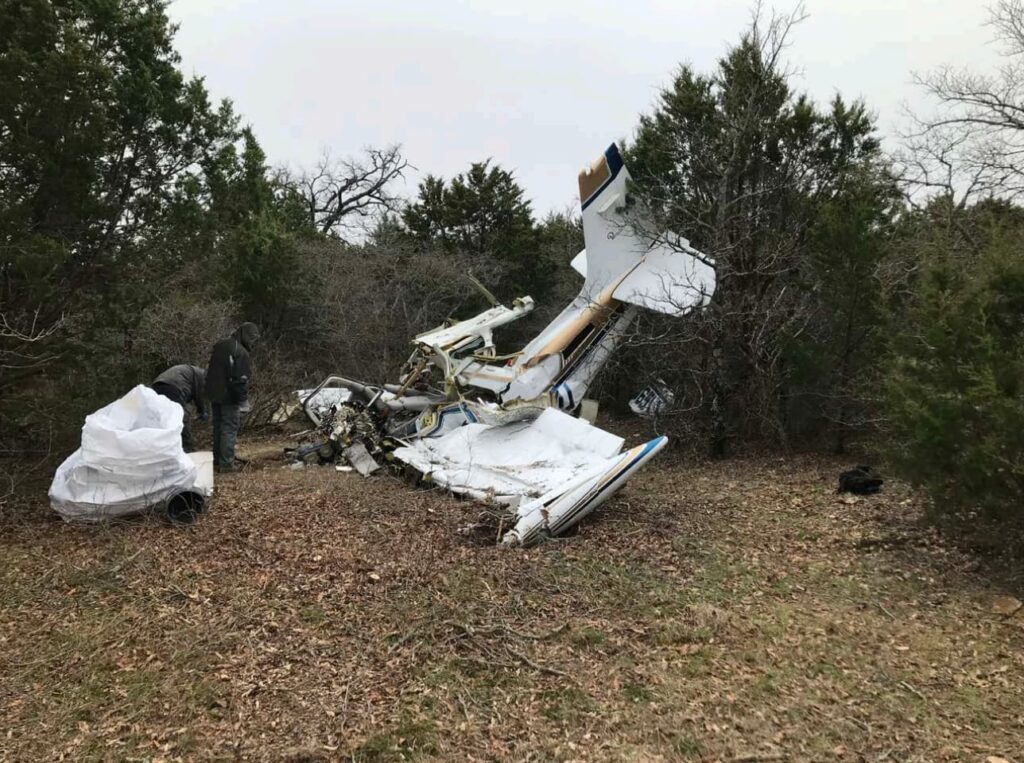
NTSB’s Bottom Line
The Board determined the probable cause was the pilot’s exceedance of the airplane’s critical angle of attack while maneuvering in the traffic pattern, resulting in an aerodynamic stall and loss of control. It’s a familiar sentence that keeps showing up in reports, and it keeps showing up because it keeps happening. The antidote is as familiar as it is unglamorous: stable patterns, coordinated turns, energy discipline, and an early-and-often go-around philosophy.






